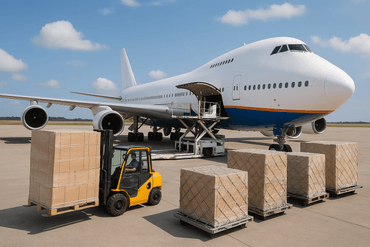
Playing Tetris to calculate the volume of an LCL (groupage) shipment



How to calculate the volume of an LCL shipment
When we begin planning an overseas move , one of the first things we think about is getting a reliable and accurate estimate. In maritime transport, this is called a quote, and it will include the maritime travel costs for our goods (“freight”) and all management of the documentation necessary for the trip to go smoothly.
Depending on the volume of your goods (“cargo”), you’ll have one of two options: you may choose a full container for the transfer of your things, or a shared container, which is known as groupage or LCL. If you don’t yet know whether you’ll need a full container or groupage, we recommend that you visit our page, “What fits in a container?“
In the case of groupage or LCL, when you request an estimate from a shipper, or get one yourself instantly from our website, the most important information that you will need to know is the volume of your cargo.
And here’s where problems can arise, because usually, no one knows this exactly until the goods are already wrapped, packaged, and on pallets, ready for loading into the container. But we need this information long before then…the shipper asks you for the dimensions, you don’t know, you despair, and you cry to the heavens or the shipping rep, “I have no idea!”
But there is, in fact, a method to help you calculate the volume of an LCL shipment so that our initial estimate can be as reliable as possible, and it’s related to the dimensions of your cargo. It may cost you an afternoon and a few drops of sweat, but it’s actually quite simple. It’s also highly recommended if you wish to have a very clear idea right from the beginning of how much your move will cost you.
Dimensions can help us calculate the volume of our cargo in cubic feet . Basically, we just form a cube on the floor out of all our things: once that’s done, we just have to measure the height, width, and length, and then multiply these three numbers. The result will be the cubic footage of our cargo.
This method doesn’t have much mystery to it, but admittedly, it can certainly be difficult to put together all our belongings and form a cube with them two months before moving, as though this were a big game of Tetris or a giant Rubik’s Cube. We’re thus going to give you a bit of advice that can facilitate the process:
Boxes, boxes, and more boxes…
As part of our move we’ll of course use a large number of boxes to pack up various things – household goods, clothing, books, etc . Obviously we’re not going to box up all those things simply to get our dimensions. So what you can do is fill two boxes – a large one and a smaller one – and use them as models for the rest of your belongings.
You’ll then need to estimate the total number of boxes you’ll be using, which isn’t easy, but taking as a reference what you’ve fitted into the “model boxes,” you should be able to get a reasonably approximate number. Once you have this number, you can use empty boxes to fill in your cargo cube, or you can make marks using chalk or tape on the floor and the walls.
Ah, the furniture!
The difficulty of Tetris is progressive: How do we calculate the volume of all our furniture and appliances? Are we supposed to move it all and stack one thing on top of another in our living room???
Let’s take a deep breath. The first thing to do is make a list of all the furniture we want to take with us . Let’s think carefully about whether things will really be worth the trouble of bringing; if, for example, we’re dealing with a very large piece of furniture of little value, we’re probably just adding bulk (and, thus, cost) to our cargo. It would probably make more sense to buy something new at our destination, in our new home country.
Once we have a definitive list of pieces of furniture we want to take, we’ll have two options: the first is to go to a website like Ikea and look for items similar to yours in length, width, and height. With this data you can calculate the cubic volume of each piece of furniture and then add them all up to form an imaginary cube. The second option is similar, but a bit more time-consuming, and thus more accurate. It involves taking the same measurements, but of the actual furniture you’ll be taking with you, and adding those up.
You now have all the information necessary to form your cube, whether it be real or imaginary, or a mix of both. The volume of this cube (its length, height, and width) is what will largely determine your estimate or quote.
It sounds a bit labor-intensive to do everything we’ve related here, but as we’ve said, it’s worth the trouble, because this is the only way you’ll get a really solid estimate without unpleasant surprises in the end. Ask your family and/or friends to take one afternoon to help you calculate the dimensions of your shipment: you’ll get a little Tetris, a little Rubik’s Cube, a little exercise, and surely more than a few fun moments to remember!
It is also specially important to pack your furniture carefully in oder to make sure they arrive in good conditions. “But, how?”, you may wonder. You’re in luck! Here are a few veru useful tips on how to pack furniture for international shipping.
Related Articles


